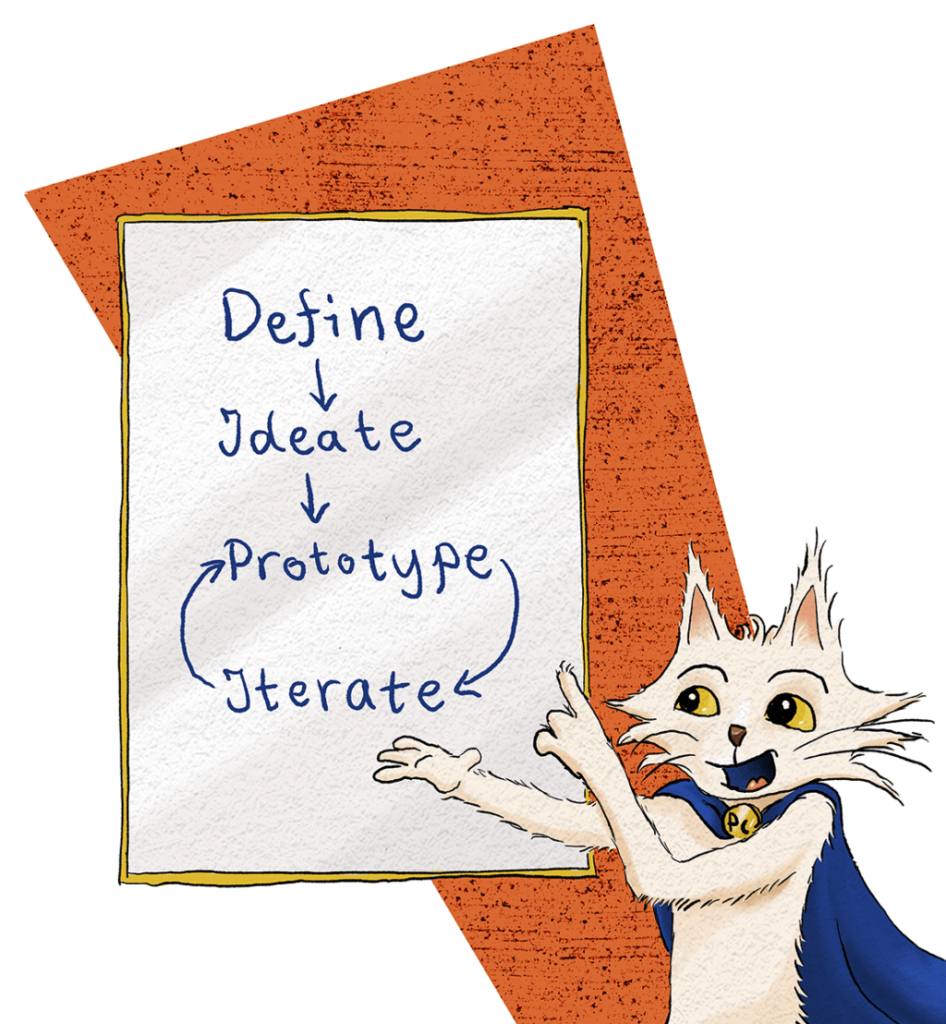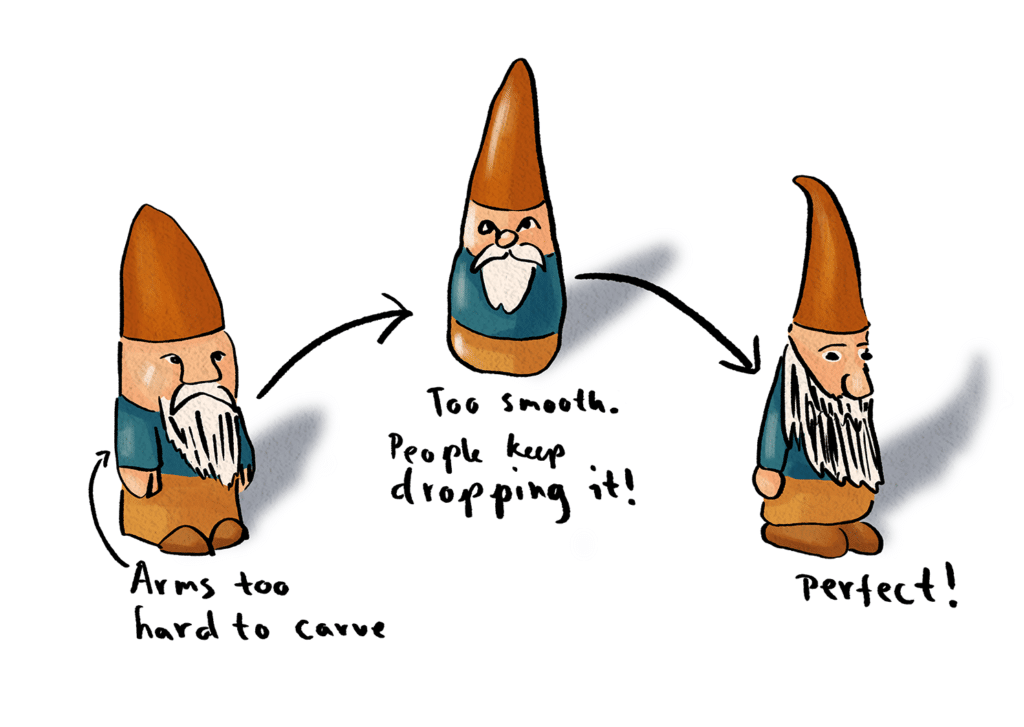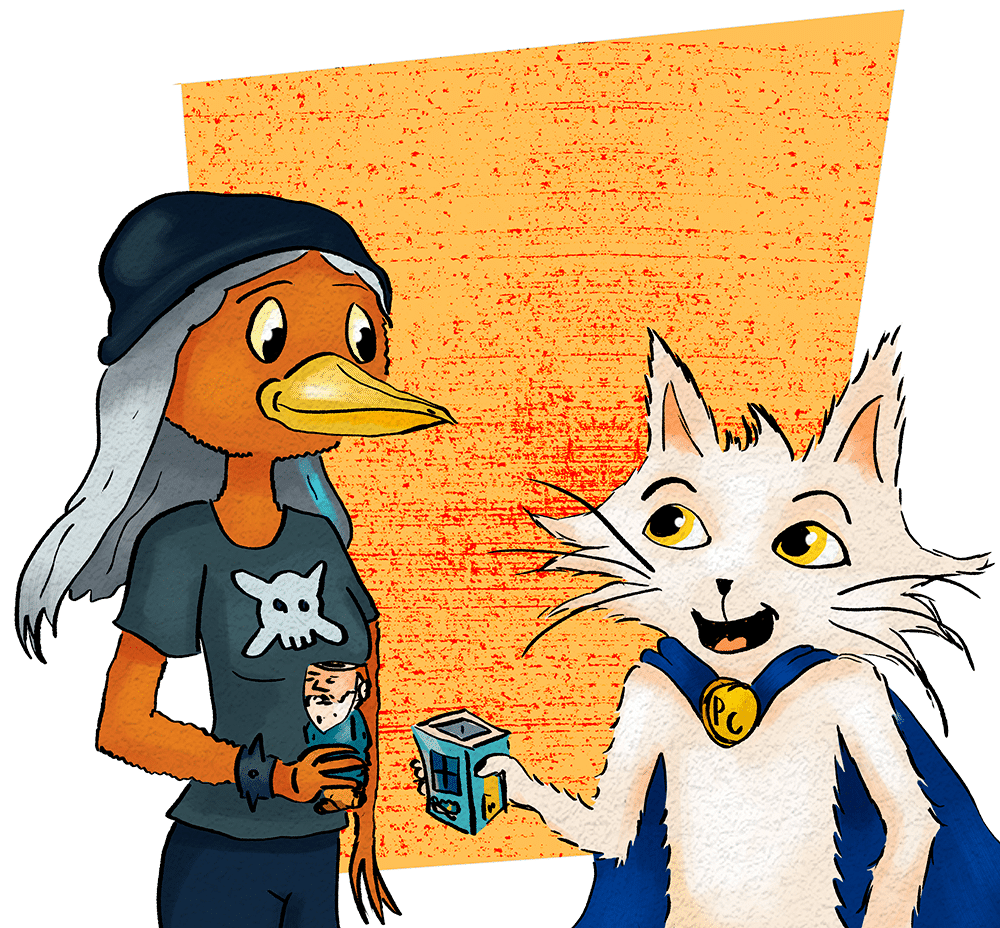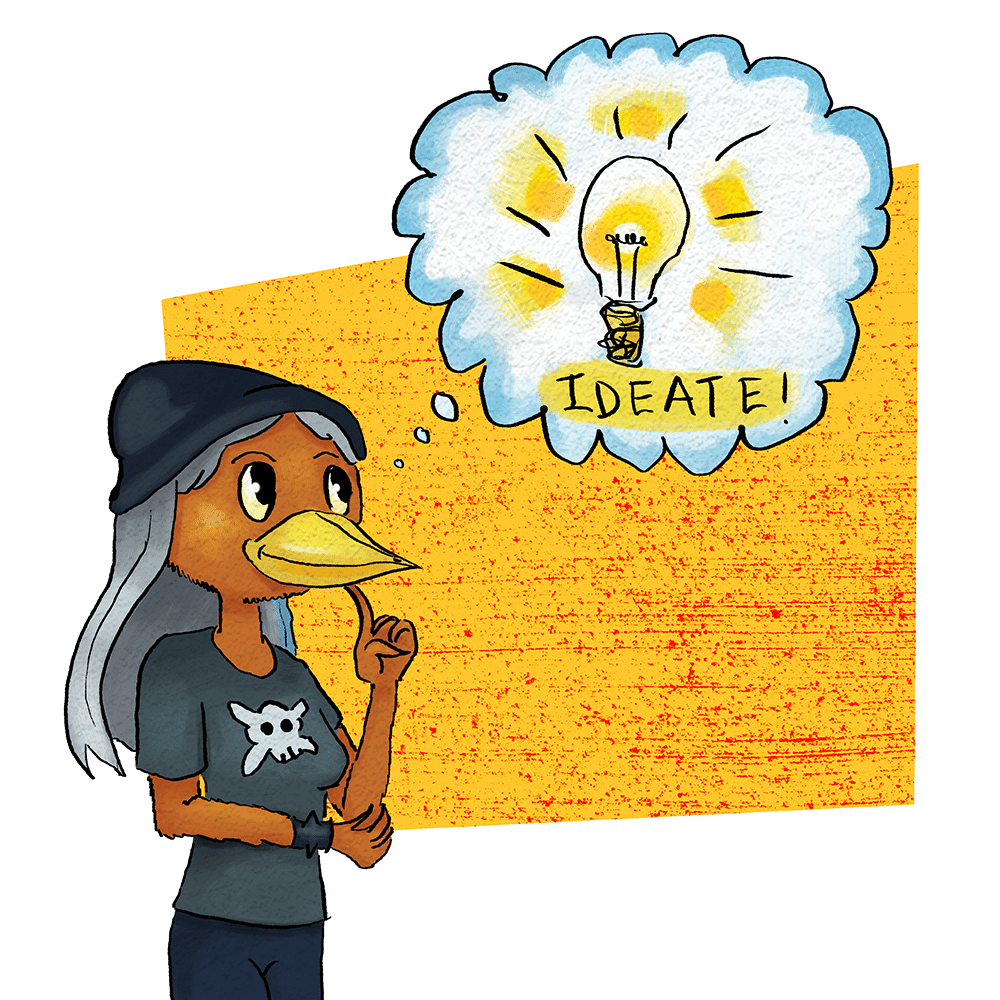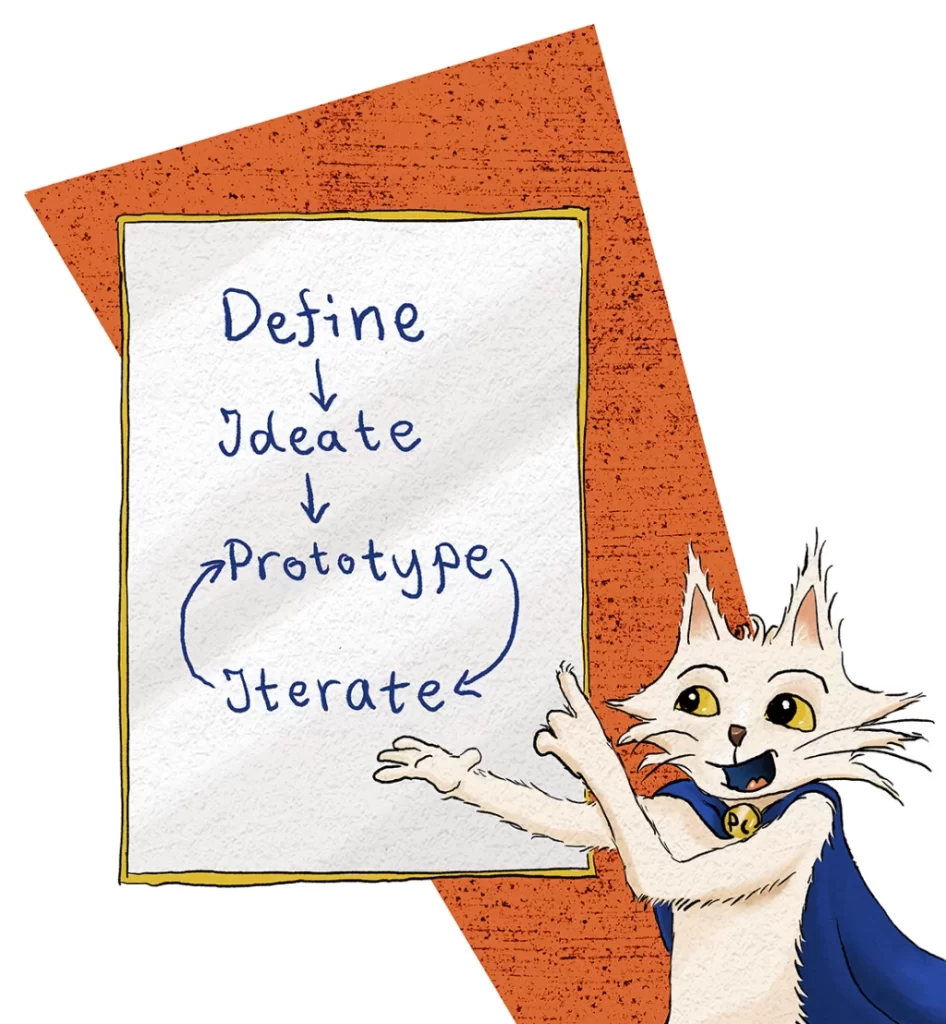
Design thinking: you’ve probably heard of it. But have you ever wondered how you can apply it in your business?
Rhonda recently had a chance to do that…
If you’re a regular PCat reader, you know that Rhonda is a retired nurse who now has a business making and selling wooden coasters. She cuts them with a CNC router in her garage workshop.
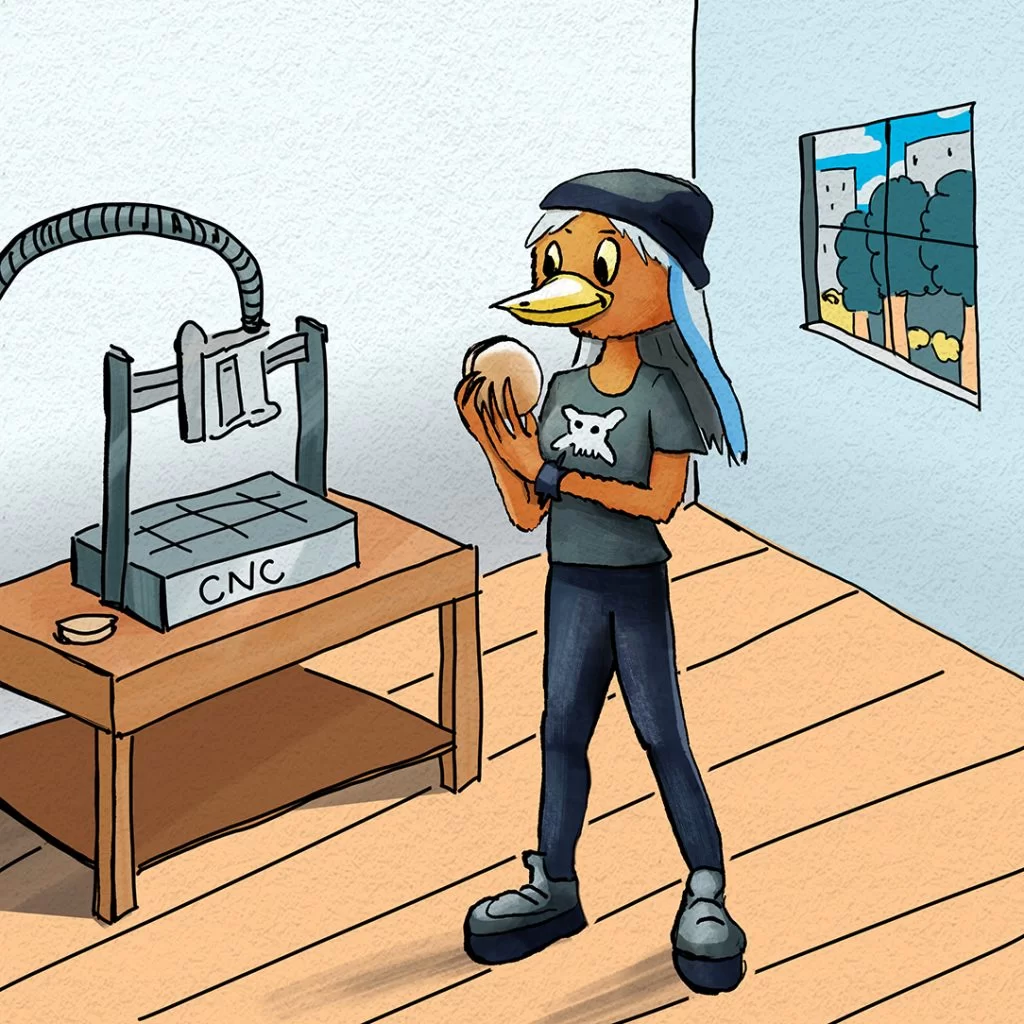
Now that she has that product selling smoothly, she’s been looking to expand her offerings. But this time she wanted to invent something fresh! Something the world had never seen! But how to do that? How can she think of a brand-new product that people need?
Start with a problem.
Different people or schools in the product design world will list slightly different steps for the design thinking process. But basically, they all start with defining a problem.
In Rhonda’s case, she found a problem while hanging out with her friend Princess Capybara. Princess Capybara is a young entrepreneur whose latest product is the Secret Wine Glass, a concrete cube that she uses to drink wine SECRETLY!
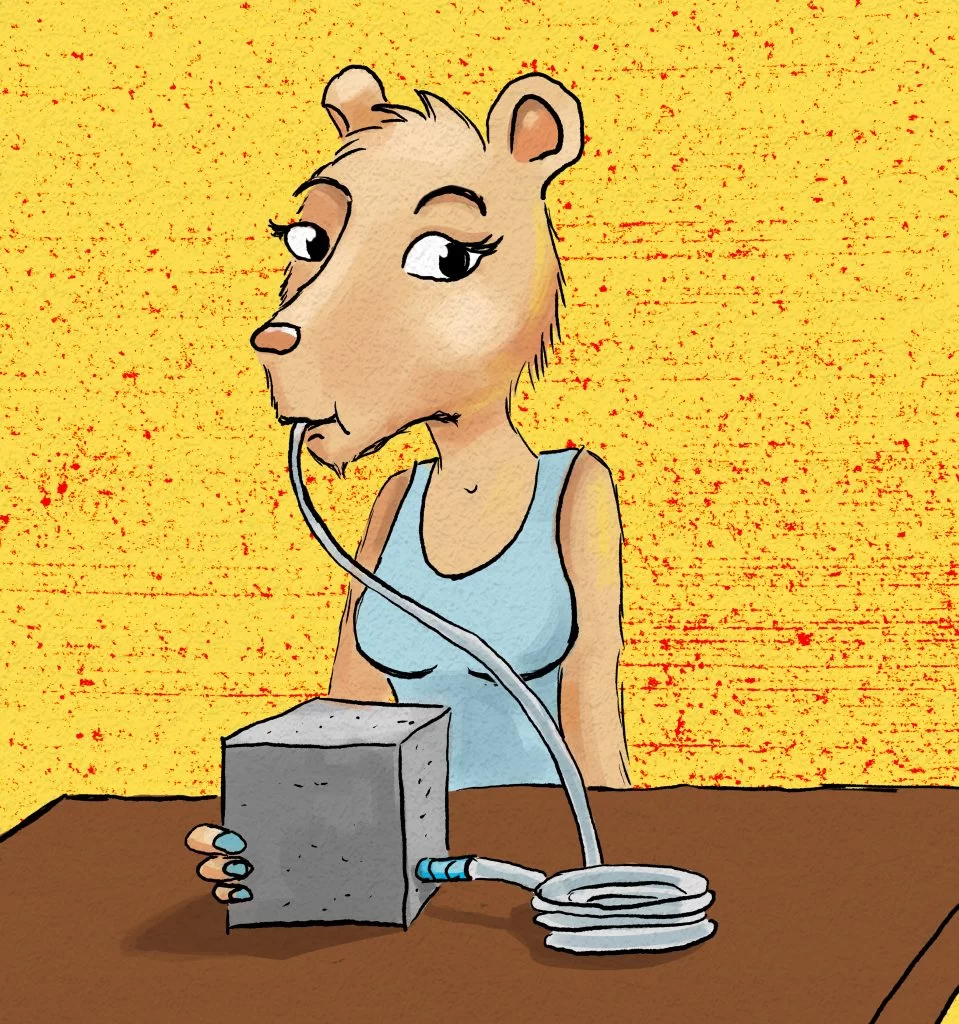
So what’s the problem? Well, Rhonda doesn’t like wine. She prefers beer, especially IPA’s. And beer isn’t good when consumed through a plastic hose! (Yes, some people think wine isn’t either. That’s not the point.)
Anyway, Rhonda wants to sip the beer as she would from a pint glass while borrowing the Princess’s idea of making a discreet beverage container. Which brings us to an important principle for product design and other types of creative thinking:
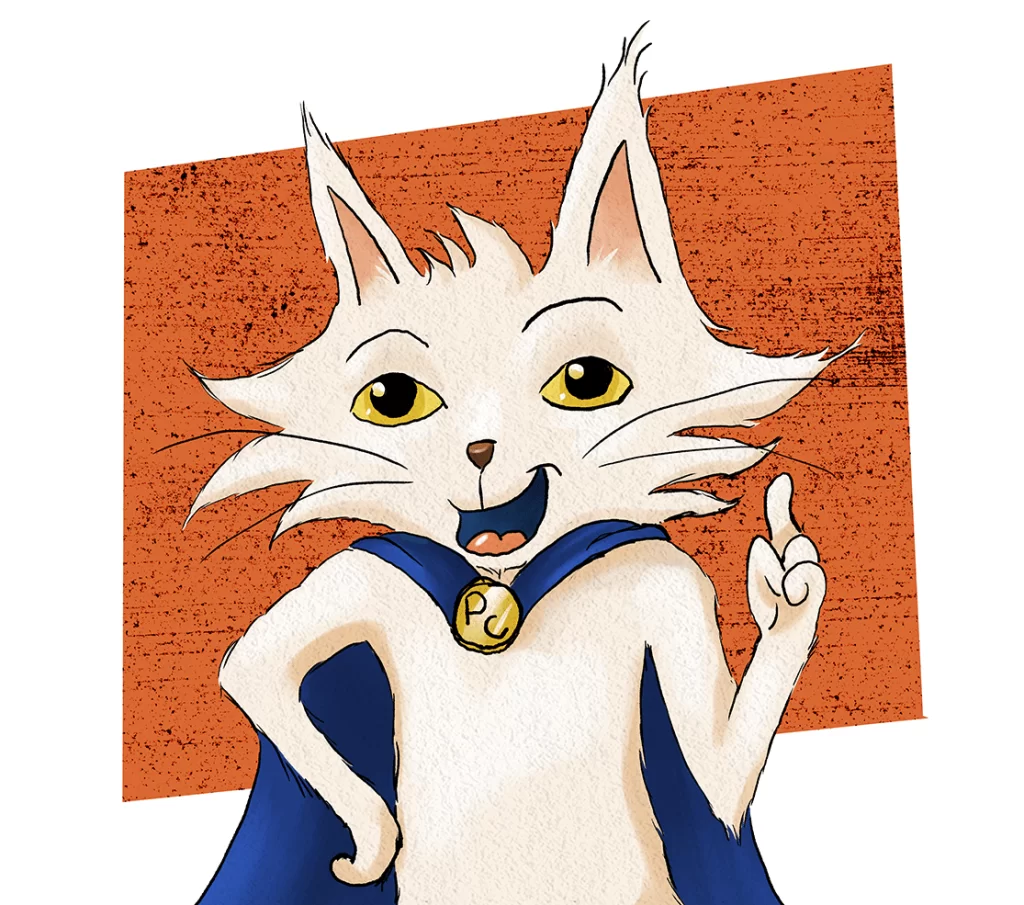
So the problem is: design a discreet container for consuming beer. The top should be open so it still functions as a regular cup, but it should not look like a normal pint glass or beer stein.
Ok, so what’s the next step?
Design Thinking Step 2: Define your Constraints
Before you start brainstorming solutions to the design problem that you’ve chosen, you need to list out your constraints. (Or at least as many as you can think of!)
These will include things like
- Budget
- Schedule
- Your skills
- Legal or safety requirements that you need to meet
Rhonda thought of a few others specific to her situation, too:
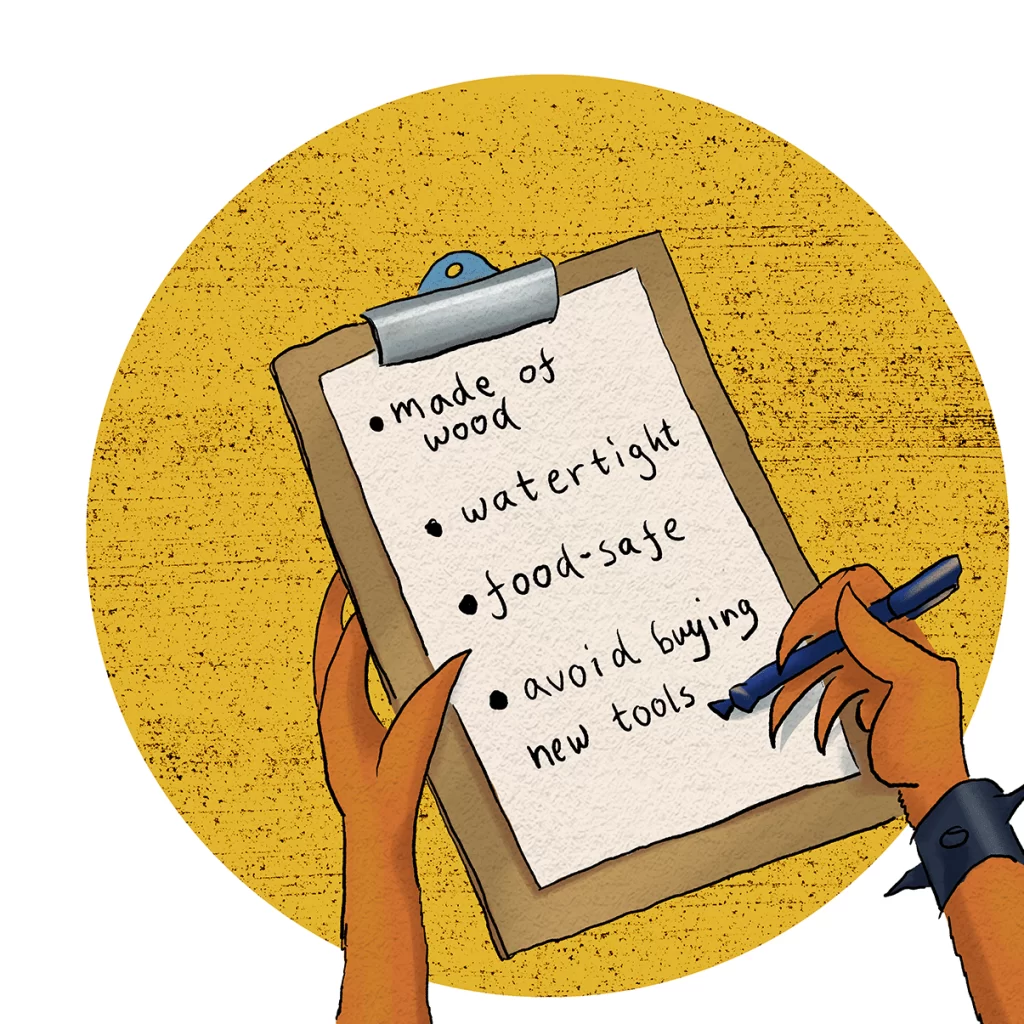
Cool, so what comes after that? Well, once you’ve defined your problem and listed out your constraints, the next step is brainstorming solutions. But if possible, I recommend an “intermediate next step” of walking away from this project for a little while. Work on another project, get some exercise, do your laundry…
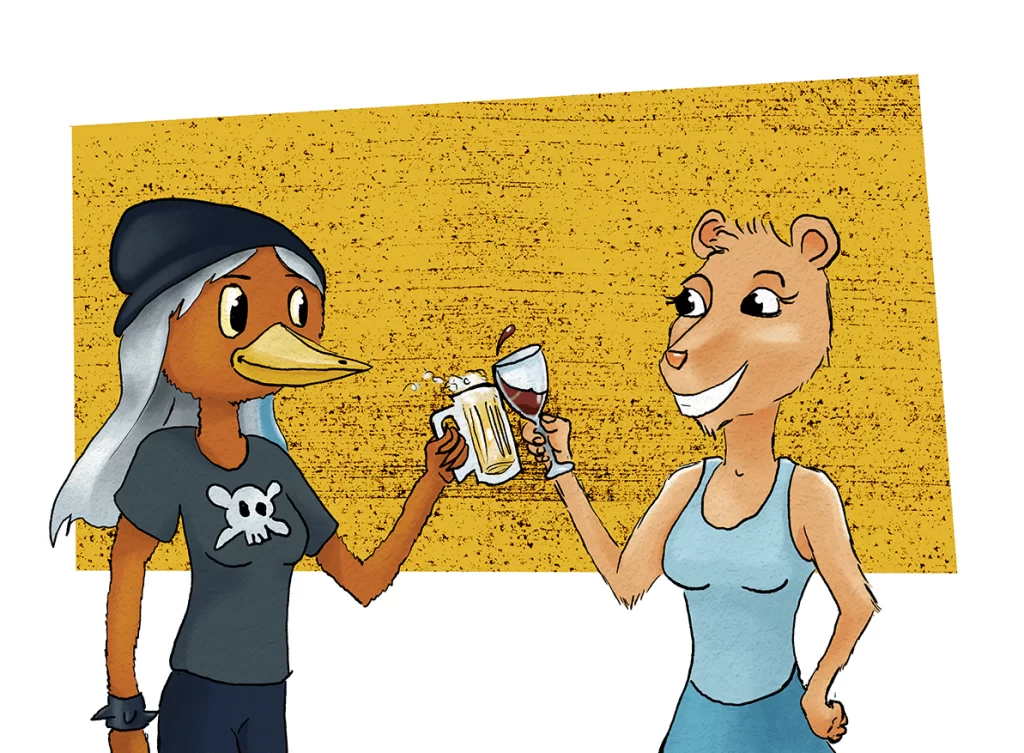
Weekly Challenge:
Think of a problem you want to solve with a new product. (And remember, your “problem” doesn’t have to be any more serious than Rhonda’s!) Try using what you’ve just learned about Design Thinking: clearly state your problem, and come up with a list of constraints. Next time we’ll talk about steps 3 and 4 of the Design Thinking process 🙂
